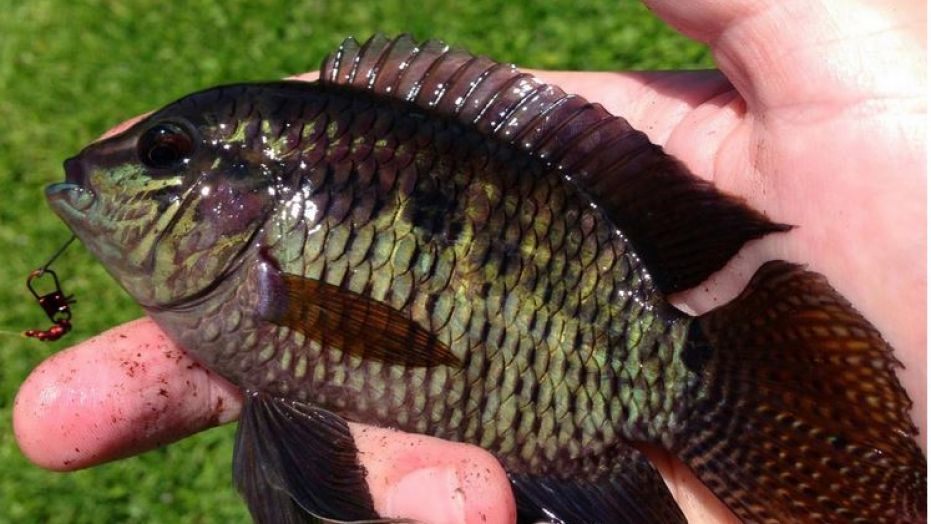
By: Kyle Grammatica
A new invasive fish species has been identified in Florida called the chanchita, a subtropical fish native to Southern Brazil. For many years chanchitas were misidentified as a similar looking nonnative fish, the black acara. Chanchitas (Cichlasoma dimerus) are freshwater fish currently present in seven counties and five river drainages in Florida. Robert Robins, Florida Museum of Natural History ichthyology collection manager, says that the chanchita appears to have been introduced to Florida in the Tampa Bay area around 2000. The black acara is a tropical fish that needs warm water sources like the ones found in Miami and South Florida. It has been noted as an invasive species in Miami since the 1950’s and was introduced to the area through the exotic pet trade.
The misidentification of the chanchita was discovered by fish collector hobbyists and non-native fish expert Mary Brown with the U.S. Geological Survey Wetland and Aquatic Research Center. Brown was viewing a supposed black acara when she noticed that it did not look quite right.
“The body color and the pattern on the scales on its head just looked a little different. It wasn’t the same as the black acara I’ve come across while conducting non-native fish surveys in South Florida,” Brown said.
While Brown was looking into this, Ryan Crutchfield, founder of a fish identification database called FishMap.org, was discovering the same thing through the help of amateur fish collectors. Crutchfield began receiving messages that he had misidentified a fish as a black acara in an article written on his website. Crutchfield, Robins, and Brown spent time observing the mystery fish and were eventually able to identify them as chanchitas. Both chanchitas and black acaras belong to the cichlid family which includes about 1,900 species. The large number of cichlid species (some of which are distinguished by only small differences) can make identification difficult, Robins said. Another reason for the mix up was the species’s ability to change color depending on their environment. These variations in color can go away when a fish is studied in a laboratory or preserved in alcohol. When scientists began collecting adult chanchitas in the wild, the differences between them and black acaras became more apparent. The established chanchitas had a more vibrant color than black acaras, a key factor in determining that the two were different species. The researchers took the collected specimens and performed a CT scan, which allowed the researchers to confirm that the mystery fish was truly the chanchita. Correctly identifying the chanchita will help experts create a more accurate profile of the species and create plans better suited to controlling their spread.
Invasive fish species like black acaras and chanchitas can have large effects on the ecosystem. These species can outbreed and outcompete native species, leading to endangerment and possible extinction. Species higher in the food chain can also be harmed if their prey begins to disappear. Help us combat the spread of invasive species by donating here.













